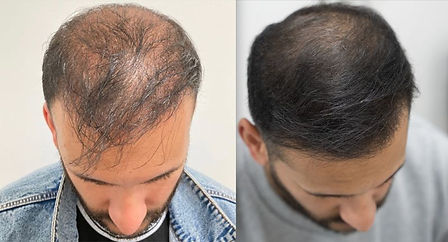Best Hair Transplants in Bangalore
Treatment
Hair Transplantation
Hair transplantation or hair transplant is a surgical technique to feature additional hairs to affected areas by extracting hair follicles from a region of the body (donor areas) and transplant those hair follicles to the affected bald or balding sites (recipient areas). It’s a minimally invasive technique where grafts containing hair follicles area unit uprooted from the genetically resistant balding parts (such as the back of the head) and transplanted to the bald spots of the scalp, which hairs start eventually growing.
.png)
-p-800_.jpg)
Hair Transplantation Techniques
Typically, hair transplant could be a more practical treatment than over-the-counter hair restoration products because the technique involves in hair transplantation is to realize a natural look.
Follicular Unit Transplantation (FUE) and Follicular Unit Extraction (FUT) area units are the two ways of hair transplantation. Once the initial examination is conducted, your operating surgeon for hair transplant can counsel you with the correct procedure.
FUE Hair Transplantation Technique
Generally, this method is carried out by administering local anesthesia to decrease pain or any discomfort throughout the procedure.
FUE is one amongst the foremost standard hair transplant techniques used where individual follicular units containing 1 to 4 hairs area unit removed, usually using tiny punches ranging between 0.6mm and 1.0mm in diameter. The surgeon will first prepare the donor space area (back or side of the head). The surgeon will puncture the sites for grafting using micro blades or fine needles in keeping with the density and also the pattern. Then, hair follicles are taken out of the scalp carefully and placing every hair follicles into the transplanted space.

FUT Hair Transplantation Surgery Technique
.jpg)
In this technique, local anesthesia is administered to minimize any discomfort or pain during the procedure.
FUT is hair transplantation wherein a strip of the hair bearing scalp is extracted from the back or side of the head. The donor area where the scalp is removed will be close with the stitches. The donor strip with naturally occurring follicular hair units will have a group of 1 to 4 hairs and each follicle is separated.
The surgeon will now create sites where the grafts are to be transplanted. Your surgeon will make small puncture holes on the transplanted scalp with a needle or a blade. The grafts containing follicular unit groups extracted from the scalp are carefully inserted into the punctured holes.
Side Effects of Hair Transplantation
Every surgery process has certain side-effects, and associated side-effects with hair transplantation are minor and temporary. Some of them include:
-
Infection
-
Bruising on eyes
-
Swelling
-
Scabs forms on the areas of the scalp
-
Numbness
-
Itching
-
Inflammation

Hair Transplantation Video Consultation
Consulting with the right surgeon is always better to understand the hair transplant procedure and techniques provided by the surgeon. Cosmetic Surgeon for Hair Transplantation at SurgiDerma will help you determine your expectations. Keeping transparency with your doctor about medical history, present medical health and even previously hair transplant surgery (if done) can help your doctor to decide the perfect technique.
Ideal Candidates for Hair Transplantation
Hair transplant improves overall appearance and self-confidence. Men with male-pattern baldness and women with thinning hair are the ideal candidates for hair transplantation surgery. However, hair transplant is not good for women who have widespread pattern of hair scalp, people who have less hairs on the donor sites, people with keloid scars and people who have loss due to chemotherapy.
Results
Hair transplantation gives natural results and realistic expectations wherein the new hair will grow in the transplanted scalp. The specific of new hair grown depends on the quality of hair including thickness, size of the transplanted zone, scalp laxity, and hair curl.






